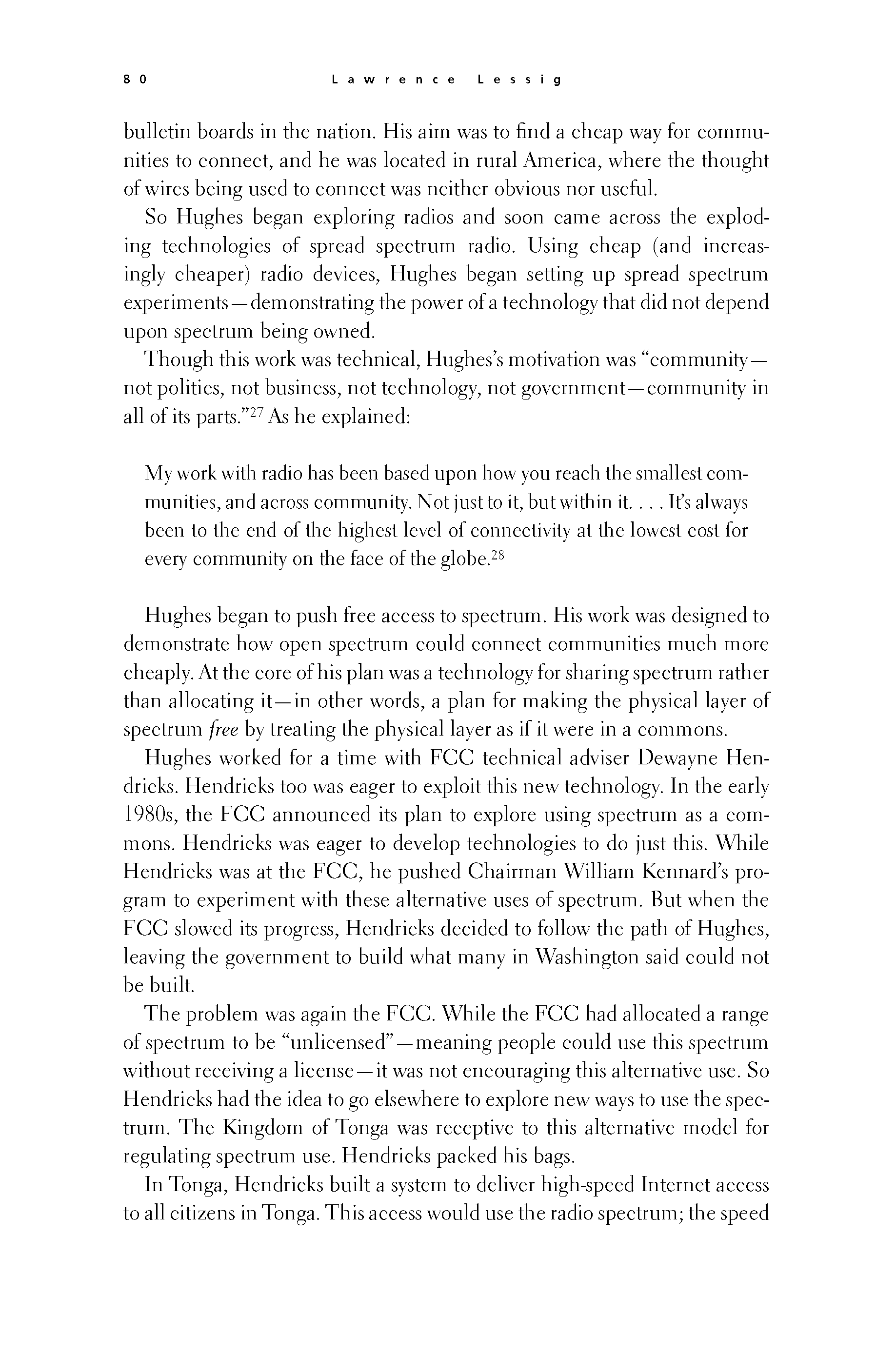 p079 _
-chap- _
toc-1 _
p080w _
toc-2 _
+chap+ _
p081
p079 _
-chap- _
toc-1 _
p080w _
toc-2 _
+chap+ _
p081
bulletin boards in the nation. His aim was to find a cheap way for commu-
nities to connect, and he was located in rural America, where the thought
of wires being used to connect was neither obvious nor useful.
So Hughes began exploring radios and soon came across the explod-
ing technologies of spread spectrum radio. Using cheap (and increas-
ingly cheaper) radio devices, Hughes began setting up spread spectrum
experiments -- demonstrating the power of a technology that did not depend
upon spectrum being owned.
Though this work was technical, Hughes's motivation was "community --
not politics, not business, not technology, not government -- community in
all of its parts."[5-27] As he explained:
____ My work with radio has been based upon how you reach the smallest com-
____ munities, and across community. Not just to it, but within it... It's always
____ been to the end of the highest level of connectivity at the lowest cost for
____ every community on the face of the globe.[5-28]
Hughes began to push free access to spectrum. His work was designed to
demonstrate how open spectrum could connect communities much more
cheaply. At the core of his plan was a technology for sharing spectrum rather
than allocating it -- in other words, a plan for making the physical layer of
spectrum _free_ by treating the physical layer as if it were in a commons.
Hughes worked for a time with FCC technical adviser Dewayne Hen-
dricks. Hendricks too was eager to exploit this new technology. In the early
1980s, the FCC announced its plan to explore using spectrum as a com-
mons. Hendricks was eager to develop technologies to do just this. While
Hendricks was at the FCC, he pushed Chairman William Kennard's pro-
gram to experiment with these alternative uses of spectrum. But when the
FCC slowed its progress, Hendricks decided to follow the path of Hughes,
leaving the government to build what many in Washington said could not
be built.
The problem was again the FCC. While the FCC had allocated a range
of spectrum to be "unlicensed" -- meaning people could use this spectrum
without receiving a license -- it was not encouraging this alternative use. So
Hendricks had the idea to go elsewhere to explore new ways to use the spec-
trum. The Kingdom of Tonga was receptive to this alternative model for
regulating spectrum use. Hendricks packed his bags.
In Tonga, Hendricks built a system to deliver high-speed Internet access
to all citizens in Tonga. This access would use the radio spectrum; the speed
[[80]]
p079 _
-chap- _
toc-1 _
p080w _
toc-2 _
+chap+ _
p081